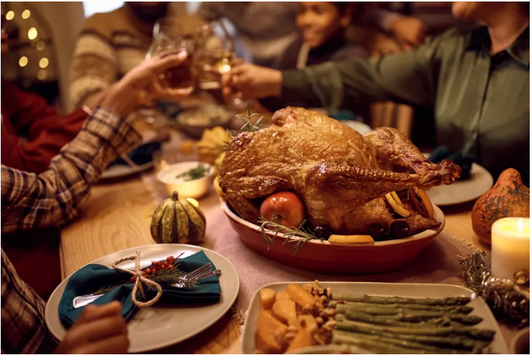

If you’re searching for the secret to the perfect Thanksgiving, you’re probably stuck between two pressures: being fully present with your guests and flawlessly executing the meal. You want to listen, laugh, and connect—yet the turkey, sides, and timing demand your full attention. It often feels like an impossible choice between people and performance. But the real answer isn’t better balance. It’s integration. The most memorable Thanksgivings happen when human connection and high-level execution work together, not against each other.
Thanksgiving creates a unique emotional and logistical collision. You’re hosting different personalities, energy levels, and family dynamics while managing one of the most complex meals of the year. These goals seem to compete with each other. Be attentive or be efficient. Be warm or be precise. Be relational or be results-driven. This tension mirrors the same struggle leaders face in high-pressure environments, where empathy and urgency often feel like opposing forces—even though they don’t have to be.
The hosts who make everyone feel valued share key habits. They listen without rushing conversations. They create emotional safety, even when topics or personalities clash. They notice the quiet guest and include them intentionally. They welcome new traditions without shaming failed attempts. Most importantly, they remember personal details—dietary needs, life stressors, and emotional undercurrents. These small actions turn a meal into a meaningful experience and guests into participants, not just attendees.
Strong execution is just as essential as warmth. Results-driven hosts know what their guests need before anyone asks. They prioritize the few dishes that truly define the meal. They make fast decisions when things go wrong instead of freezing in frustration. They adapt traditions when necessary and set clear expectations for timing and contributions. They anticipate problems early and remove obstacles before chaos begins. These habits don’t create cold efficiency—they create calm confidence.
The biggest mistake hosts make is trying to switch between connection mode and execution mode. This constant toggling leads to stress, distraction, and emotional absence. Guests sense when you’re physically present but mentally overwhelmed. They also feel it when the meal is disorganized despite your good intentions. Compartmentalizing doesn’t solve the problem—it multiplies it. The most seamless holidays don’t come from trying harder in two separate directions.
The most successful hosts don’t balance people and performance—they integrate them. Guest needs inform the meal plan. The meal plan creates space for connection. Appreciation drives preparation. Preparation protects presence. Instead of choosing between warmth and results, they design the experience so each strengthens the other. Execution becomes an act of care, and care becomes the fuel for execution. This is where the magic happens.
Integration changes how the day feels from the inside. You’re no longer torn between kitchen stress and social guilt. Your systems—timelines, prep work, shared responsibilities—free you to be emotionally available. Your decisions are guided by what matters most to your guests, not by arbitrary traditions or perfection. When obstacles appear, you adapt without panic. The result is not just a smoother meal, but a calmer, more joyful host.
When appreciation and execution work together, you don’t get an average holiday—you get an unforgettable one. Guests feel genuinely welcomed. The food arrives on time. Laughter replaces tension. The kitchen becomes collaborative instead of chaotic. Long after the leftovers are gone, what people remember isn’t just the flavors—it’s how they felt in your home. That’s not balance. That’s integration. And that’s the real secret to a Thanksgiving people will talk about for years.
𝗦𝗲𝗺𝗮𝘀𝗼𝗰𝗶𝗮𝗹 𝗶𝘀 𝘄𝗵𝗲𝗿𝗲 𝗿𝗲𝗮𝗹 𝗽𝗲𝗼𝗽𝗹𝗲 𝗰𝗼𝗻𝗻𝗲𝗰𝘁, 𝗴𝗿𝗼𝘄, 𝗮𝗻𝗱 𝗯𝗲𝗹𝗼𝗻𝗴. We’re more than just a social platform — from jobs and blogs to events and daily chats, we bring people and ideas together in one simple, meaningful space.
Comments